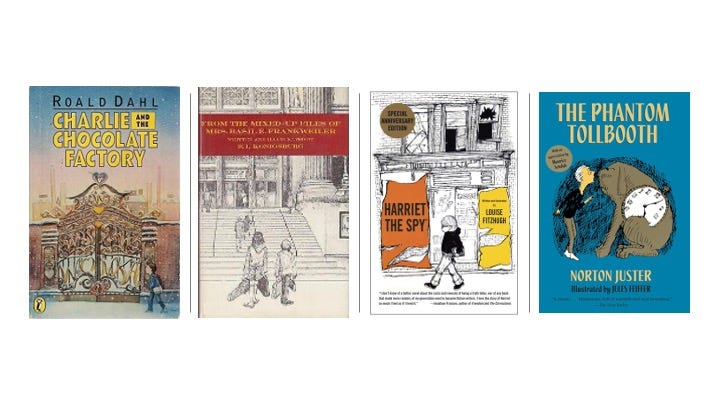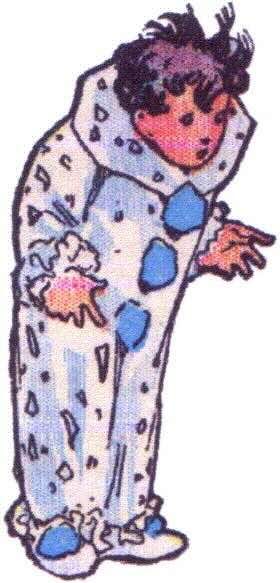Writing for Children
Advice from a former child
A student wrote me over the break telling me they were interested in writing for children and wondering if I had any tips. I don’t write children’s books, but some of the greatest and most imaginatively enduring books I’ve ever read were books I read in childhood and early adolescence, and they did a great deal to shape my sense of what great writing can do for us at any age. Somewhat to my surprise therefore, I had things to say in response to my student’s inquiry, and I thought I’d share them with my gentle readers:
When I think of the really great children’s books—Alice’s Adventures in Wonderland, E.L. Konigsburg’s From the Mixed-Up Files of Mrs. Basil E. Frankweiler, Louise Fitzhugh’s Harriet the Spy, Norton Juster’s The Phantom Tollbooth, most of Roald Dahl, so many others—I note the following characteristics:
They never condescend to their readers or insult their intelligence or talk down to them in any way. The same goes for their characters. It’s a little like great comedy: I am told by those that know that the funniest comedians and actors never try to make you laugh; they just play the absurdity straight. So play your characters’ dilemmas straight, even when they involve talking animals.
They demonstrate an absolute delight in precise language and the strangeness of words.
They are about the things kids worry about, which are the same things everybody worries about: death, abandonment, being an outcast, not having enough of what you need, envy and jealousy, the desire to be free versus the desire to be loved. There’s real darkness in all the greatest children’s literature.
This is hard to describe, but to mix metaphors, they have a sure-handed voice; that is, the reader always feels that the narrator is guiding them confidently and holding the space. They feel a kind of faith in the narrator to lead them and the characters to a good outcome.
At the same time, this narrator must be capable of surprising the reader! All great literature is surprising.
A flawed main character with whom we can’t help but identify; but this character has to show some pluck or moxie—maybe not at first, but certainly before the story ends.
Great villains, who often represent temptations that the main character must ultimately reject. (But some children’s books don’t have a villain, or the villain isn’t who you think it is. It’s not strictly speaking a children’s book, but think of Boo Radley in To Kill a Mockingbird.)
Vivid and memorable minor characters. Think of Veruca Salt from Charlie and the Chocolate Factory, or the Caterpillar from Alice.
A distinctive world, whether invented (Wonderland, Willy Wonka’s chocolate factory, etc.) or real (the New York neighborhoods explored by Harriet, or the Metropolitan Museum of Art in which Claudia and Jamie Kincaid live for a time).
Humor! I can’t think of a great children’s book that isn’t riotously funny.
If you haven’t read the books I’ve mentioned, do so! It’s important to have good models in your head—and to reread them as an adult who wants to write, so that you can study the various strategies and “moves” made by their authors.
You’ll notice I’ve said nothing about plot, but nearly all of the books I’m thinking of involve some sort of search or quest. You can’t really go wrong with the classic hero’s journey for a children’s book.



